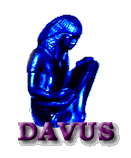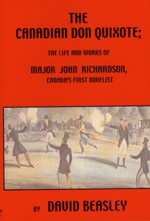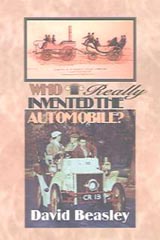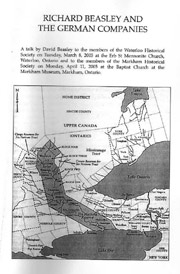

Books may be purchased by credit card through PayPal. To order books by postal mail use this ORDER FORM.
| Pay me securely with any major credit card through PayPal! |
THE WATERCOLOURS OF CHARLOTTE HILLS BEASLEYTHESE WATERCOLOURS of flowers, floral arrangements, and insects were painted between 1879 and 1882. They were pasted into a Scrapbook that was rescued by James E. A. Beasley on a pile of objects being auctioned from the estate of Annie Rice Davis Beasley in Hamilton, Ontario in 1938. The Scrapbook lay in a cedar trunk for years in the upstairs room over a garage at "The Pines", the Beasley country home on New Street, Burlington and came into the possession of David Beasley, who delighted in the artistry and beautiful colours of the paintings. They were painted by C.H.B., Charlotte Hills Beasley. Charlotte Hills was born in Hamilton, Ontario in 1835 in a family that had come to New England in the 1600s and migrated to Canada in 1812. Her father Horace and his brother Albert were early builders and architects in Hamilton. When Charlotte was orphaned at age 14, she became the ward of Alexander Carpenter who built Rock Castle, where she lived till her marriage to Thomas Beasley, third son of the City Treasurer Henry Beasley. Thomas was City Clerk and Secretary of the Board of Education for over fifty years. Charlotte began an extensive garden behind their house on Main St. East, which attracted crowds of visitors and was carried on by her son, Alexander, who inherited his mother's love for flowers and plants. Charlotte died in 1906. Dr. David Beasley, who wrote the Introduction, has written two books on art: Understanding Modern Art; the Boundless Spirit of Clay Edgar Spohn and Douglas MacAgy and the Foundations of Modern Art Curatorship. He wrote the definitive biography of Canada's first novelist, the biography of Canada's renowned actor-manager, a political-economic history of the automobile, a best-selling book on library methodology, a travel journal through Turkey, and several novels ranging from detective to historical, one of which, Sarah's Journey, won the Hamilton and Region literary award for best fiction. His latest book, Canoe Trip, is for young adults. Charlotte Hills Beasley was his great-grandmother. He lives in Simcoe, Ontario. Dr. Jim Cruise, who has identified the flowers in each watercolour, is one of the most knowledgeable persons in the field of botany. He was Dean of Arts and Sciences at the University of Toronto and Director-CEO at the Royal Ontario Museum, Toronto. He lives in Port Dover, Ontario. He wrote: "Charlotte Beasley was, without question, an extremely gifted painter. Her flowers are drawn with such accuracy and care as to make identification in most cases positive." This book has been bound so as to allow one to take out pages and frame them. The edition is limited to 200 copies. ISBN:
978-0-915317-22-6 PRICE: $90 Cdn & U.S. hard cover binding DAVUS PUBLISHING, 150 NORFOLK ST S., SIMCOE, ON N3Y 2W2 CANADA URL:
www.kwic.com/davus
email:
davus@kwic.com Tel:
519-426-2077
|
|
Biography |

THE CANADIAN DON QUIXOTE; THE LIFE AND WORKS OF MAJOR JOHN RICHARDSON, CANADA'S FIRST NOVELIST BY DAVID BEASLEY
ISBN: 0-915317-18-4 PRICE: $19.95 Cdn; $14.95 U.S
Return of a classic. What reviewers said of the 1st edition.
A nice combination of Canadian history, romantic biography, and literary research, the book is not only a good read but includes a bibliography, index and other material. Actually it is a roaring good adventure yarn about a highly eccentric dreamer and author of gothic novels. A major entry this year. Library Journal (New York).
The life of John Richardson reads like one of his novels. David Beasley does justice to this Richardson, and what a story The Canadian Don Quixote is! Army service, gambling, duels everywhere, a happy marriage, constant litigation, and constant writing ‹even this summary only begins to highlight the rich vitality of John Richardson¹s 56 years. (The London Free Press (London, Ont).
If his life is a dream David Beasley has anchored it very firmly in the social reality of the time.... His whole work teems with such careful, loving research and this makes his biography of Richardson not only a good read but the fulfillment of what¹s usually called ³an aching void.²‹ James Reaney, Brick (Toronto).
... a man whose life was so filled with dramatic events, whose career brought him in contact with important historical figures and episodes, and who first showed that Canadian history was interesting enough to be matter for literature. The Canadian Don Quixote is the result of a great deal of enterprising research on Beasley¹s part and which does supply a mass of new information on Richardson and his times.‹ George Woodcock, The Globe and Mail (Toronto).
... provides us with valuable clues to Richardson¹s complex and colorful personality and, in the process, brings to life the early history of this country, in which Kingston plays a unique part.‹ The Whig Standard (Kingston, Ont).
Canada¹s first novelist, Major John Richardson, found his heroes among the Native Americans, whose blood was in his veins.... But he was almost lost to the world for a century until he was rediscovered by David Beasley.‹ Art Shields, The Daily World (New York).
Beasley¹s work is no less that what it purports to be: the standard biography of Major Richardson. It is doubtful that much more material about Richardson will come to light, and thus Beasley¹s account will likely remain the standard source for some time.‹ Essays inCanadian Writing (Toronto).
For information on military matters of the nineteenth century contemporaneous with Major Richardson's military career researched and published by A.W. Cockerill, see
www.achart.ca
|
Art |
|
Art |
|
Travel |
|
Library Methodology |
|
American Theater |
A document listing all of Rankin's
performances and the role played, is available in MS Word and .pdf format. In order to view
the .pdf document you must have Adobe Acrobat Reader installed on your computer. It's
available free from here
![]() RankinsRoles.doc
RankinsRoles.pdf
RankinsRoles.doc
RankinsRoles.pdf
|
Political Economics |

WHO REALLY INVENTED THE AUTOMOBILE ? SKULDUGGERY AT THE CROSSROADS ISBN: 0-915317-08-7, 192p.$13.95 US, $17.95 CDN. Soft cover.
The automobile was perfected in 1829 and ran well on English roads. Who prevented its development? Was it the railway entrepreneurs? Was it the landed interests? Was it the free-traders? The same interests prevented its development in Europe and in America. Beasley takes you from the beginning through these various factions into the railway and banking conflicts to the 1890's when the automobile is allowed to develop in France. Why was it developed as the petroleum car and why was the steam car discouraged? Along the way Beasley demonstrates a unique theory of invention.
"It seems clear that 'non-economic forces' were very important in the early history of the automobile." Journal of Economic Literature: "Highly recommended." Stoney Creek News.
For political-economic articles, contemporary and historical, that give a broader perspective on technological advancement, see under Publications and Papers at www.achart.ca.
|
History |
|
and THE POLITICAL EDUCATION OF RICHARD BEASLEY; a talk given to the Waterloo Chapter of the PA German Folklore Society at the Community Centre, New Dundee, Ontario on April 26, 2007. Burlington Heights overlooking Burlington Bay and Lake Ontario at the head of the lake was a meeting place for American Indians through the centuries, the site of a fur trading post and later estate belonging to Squire Richard Beasley, the central nerve centre and headquarters for troops during the War of 1812, and the stage for many dramatic, violent and colorful scenes in the half-century that Richard Beasley lived there before he lost the land to Allan MacNab who built Dundurn Castle there. As a magistrate and Colonel of the 2nd York militia, Richard Beasley experienced a political vendetta from the Tory oligarchy that began when he tried to help Chief Joseph Brant bring settlers into Waterloo County and, as speaker of the Upper Canada House of Assembly, worked with the liberal element for the benefit of the settlers. Historical characters such as Reverend John Strachan, Colonel William Claus, Major Titus Simons and the Honorable Richard Cartwright infiltrate Beasley's life to give him a political education. ISBN: 978-0-915317-23-3 PRICE: $5.00
|
 RICHARD BEASLEY AND THE GERMAN COMPANIES: A TALK BY DAVID BEASLEY to the members of the Waterloo Historical Society on Tuesday, March 8, 2005 and at the Erb St Mennonite Church, Waterloo, Ontario and to members of the Markham Historical Society on Monday April 11, 2005 at the Baptist Church at the Markham Museum, Markham, Ontario. (18p. 2 illus)SBN: 0-915317-19-2 PRICE: $4.00 Cdn; T his talk follows the talk by David Beasley in 2002 printed in the pamphlet Richard Beasley, the Character of the Man and his Times, (Simcoe, ON and Buffalo, N.Y.:Davus Publishing: www.kwic.com/~davus) which dealt with the influences of Albany, N.Y. and the American Revolution on Richard in his efforts to build a new civilization from the Upper Canadian wilderness and his political career. This second talk concentrates on Richard Beasley's experiences as a land speculator in the 1790s and the first decade of the 1800s. He was unjustly blamed for misleading the settlers when the real culprits were government officials who schemed to control the Indian nations and who feared, not without cause, the republican intentions of American speculators to expropriate parts of Upper Canada in conjunction with Napoleon's French agents who planned to sieze Lower Canada (Quebec). The main protagonists in these political machinations were Lieutenant-Governor John Graves Simcoe, William Berczy, Chief Joseph Brant, William Claus of the Indian Department, and Aaron Burr, Vice-president of the United States.The pamphlet may be ordered from the Davus Publishing at its Simcoe or Buffalo address. The price is $4.00 Cdn with no GST . Please add postage of $1.25. Please make cheque payable to David Beasley.Not Available through PAYPAL.
|
| Richard Beasley: the character of the man and his times; a talk to the Friends of the MacNab Circle at Dundurn Castle on February 19, 2002 (Simcoe: Davus Publishing, 2003) by David Beasley. Pamphlet of 24 pages contains 22 illustrations. Price $3.95 CDN Richard Beasley (1761-1842), the first settler at the Head-of-the-Lake, now Hamilton, Ontario, in the 1770s, grew up in Albany, N.Y. The pre-revolutionary influences of the social and political events he experienced as a boy guided his work as fur-trader, magistrate, great landholder, politician, militia commander and reformer in Upper Canada as hehelped to form a civilization out of the wilderness. His stand against authoritarian government brought him trouble and eventually he lost his homestead on Burlington Heights to Allan MacNab who built his Dundurn Castle on the foundations of Beasley's home. As a trader in furs, Richard partnered Richard Cartwright(his cousin with whom he had the famous Cartwright-Beasley correspondence) at Kingston, Robert Hamilton at Queenston, Tom Barry in Toronto and Peter Smith in Port Hope. He knew Chief Joseph Brant (who was 18 years his senior) growing up and had a close association with him and the Mohawks who frequented his tavern on Burlington Heights. Richard, as agent for Brant, brought Mennonite settlers to Block Two (Waterloo County) and encouraged settlement elsewhere on the behest of Lt.-Gov. Simcoe. Richard formed the militia, built grist and saw mills (re: the Ancaster Old Mill), and tried to reform the paranoid restrictions of the Family Compact against settlement. As speaker of the Assembly in 1804, he prevented Reverend Strachan's bill for establishing common schools under Anglicans, a step toward making Anglicanism the state religion, although he himself was Anglican, and earned the hatred of Strachan who worked secretly against him for years. Richard was the most prominent Canadian to support Robert Gourlay's reforms and consequently after 1820 suffered reprisals from Lt.-Gov. Maitland and the Strachan-inspired Family Compact - to which the talk refers, adding new details in footnotes. By 1826, the British colonial office began siding with the political reformers in correcting the corrupt land practices, and Richard, in the Assembly, gained his magistracy back. As a moderate reformer he worked with those such as William Lyon Mackenzie who later became radicals to bring about change. Government land policies and the still influential Strachan working through his former students such as Allan MacNab and John Solomon Cartwright combined in 1832 to undermine him financially. Richard had witnessed the horrors of the American Revolution, the fighting from Fort Niagara, the battles of the War of 1812, in which he was the Colonel of the 2nd York regiment, the swift development of wilderness into a metropolis and the eventual triumph of reform government - in all of which he played a major role. This talk touches upon all these aspects. The MacNab Circle, formed in 1969, honours Sir Allan MacNab with a birthday dinner, Feb. 19, every year, accompanied by a lecture or dramatic presentation directly related to his life and times. The pamphlet may be ordered from the Davus Publishing at its Simcoe or Buffalo address. The price is $3.95 Cdn with no GST . Please add postage of $1.25. Please make cheque payable to David Beasley. It is available in the museum bookshops in and about Hamilton, Ontario, such as Dundurn Museum, Science and Technology Museum, Ireland House, Brant Museum in Burlington, Canadian Warplane Heritage Museum at Mount Hope, and the Hamilton Regional Arts Council Office in the Jackson Square Mall, Hamilton, Eva Brook Donly Museum, Simcoe.. Not available through PayPal.
|
| Creative Non-Fiction |
ISBN: 978-0-915317-24-0 PRICE: $15.00. Creative non-fiction. Richard Beasley narrates from when he is five years old in 1766 as witness to the tenant rebellions in New York State followed by the American Revolution when his father Henry Beasley and Uncle Richard Cartwright in Albany, New York, risk their lives through the horrors of the civil war for the loyalist forces. Richard Beasley becomes a commissary at Fort Niagara, from which he observes the war out of Niagara featuring his cousin Richard Cartwright Jr,, secretary to Major John Butler of Butler’s Rangers, Chief Joseph Brant and Ensign Walter Butler while he continues his fur-trading at Toronto and the Head-of-the- Lake Ontario. After the war, his land dealings, merchant business and association in trade with Richard Cartwright Jr and Robert Hamilton, his arguments on the settlers’ behalf in the legislature where he was speaker of the Assembly, and his involvement as agent in the German land companies in Markham and Waterloo Counties, particularly during the Aaron Burr conspiracy with the French to retake Canada, make him suspect to the oligarchy in York, later Toronto. As magistrate and organizer of the militia in West York he takes on several roles during the War of 1812. The battles in the Niagara Peninsula, which involve the 2nd York Regiment of which he is Colonel, he describes in detail. As his intellectual cousin Richard Cartwright becomes more conservative and prominent, Richard Beasley grows more liberal. His correspondence with the famous defender of civil liberties Lord Erskine, his work for a free press, his championing of the reforms of Robert Gourlay and his friendship as a moderate reformer with William Lyon Mackenzie continue the political themes introduced earlier in the book. He manages to overturn the judgment of a military tribunal set up to ruin him by his powerful enemies, including Reverend Strachan and Col. William Claus, for his political views. He relates the economic blights, the pastimes, the joys and sorrows of the settlers with particular emphasis on affairs at the Headof-the-Lake, which, with his help, becomes Hamilton, a county capital. He gives us interesting details of the Upper Canada Rebellion and shows that many among the Upper Canadian community sympathized with it. In his last stint in the Assembly he does much for the establishment of civil rights and works with his one-time conservative opponent John Beverley Robinson for the country’s benefit before the uniting of the provinces in the Act of Union of 1841. RICHARD BEASLEY gives us a personal, continuous and dramatic picture of our history and the characters that made it. Richard died in 1842. |